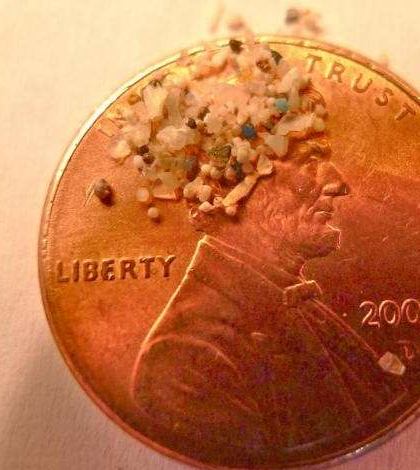Group Of Researchers Supports All-Out Ban On Plastic Microbeads

Microbeads are bits of plastic so small that hundreds of them would be needed to cover a single penny. (Credit: 5Gyres, courtesy of Oregon State University)
Scientists from seven institutions say that outright bans on using plastic microbeads in products that enter wastewater systems is the best way to protect water quality, people and wildlife from their impacts, according to a release from Oregon State University. They say that there are plenty of nontoxic alternatives out there that can take their place in products using them.
Researchers estimate that 8 trillion plastic microbeads per day are being dispersed into U.S. aquatic habitats. That’s more than is needed to cover 300 tennis courts with the plastic bits. The other 99 percent of the small beads wind up stuck in the sludge of sewage plants, which scientists say gets spread over land areas. Following rain, the microbeads can then work their way into waterways through runoff.
Microbeads are especially concerning in goods that are specifically designed to be flushed down drains, scientists say. Their full thoughts on mitigating the consequences of those products are published in the journal Environmental Science & Technology.
Top image: Microbeads are bits of plastic so small that hundreds of them would be needed to cover a single penny. (Credit: 5Gyres, courtesy of Oregon State University)




0 comments